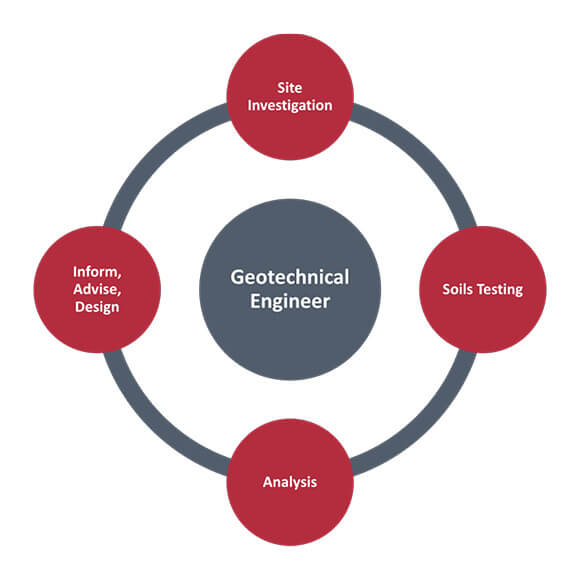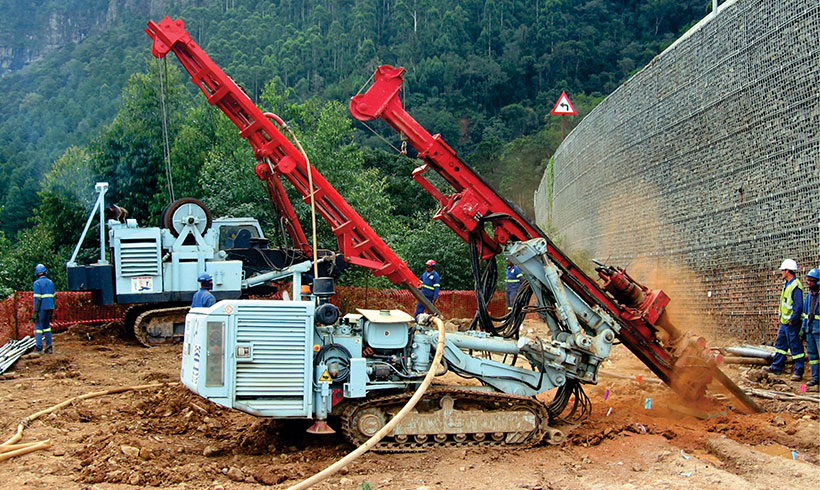The Best Guide To Geotechnical Engineering For Construction Projects
The Ultimate Guide To Geotechnical Engineering For Construction Projects
Table of ContentsOur Geotechnical Engineering For Construction Projects IdeasNot known Facts About Geotechnical Engineering For Construction ProjectsNot known Facts About Geotechnical Engineering For Construction ProjectsSome Known Incorrect Statements About Geotechnical Engineering For Construction Projects Rumored Buzz on Geotechnical Engineering For Construction Projects4 Simple Techniques For Geotechnical Engineering For Construction ProjectsLittle Known Questions About Geotechnical Engineering For Construction Projects.
and Kovacs, W. (1981 ), An Introduction to Geotechnical Design, Prentice-Hall, Inc. Deep Scan Technology (2023 ): Deep Scan Tech reveals hidden structures at the site of Denmark's highest building. "Geofrost Coring". GEOFROST. Retrieved 20 November 2020. Han, Jie (2015 ). Principles and Technique of Ground Enhancement. Wiley. ISBN 9781118421307. RAJU, V. R.Ground Renovation Technologies and Case Histories. Singapore: Study Publishing Providers. p. 809. ISBN978-981-08-3124-0. Ground Enhancement Principles And Applications In Asia. Pariseau, William G. (2011 ). Design evaluation in rock auto mechanics. CRC Press. Hegde, A.M. and Palsule P (Geotechnical Engineering for Construction Projects).S. (2020 ), Performance of Geosynthetics Reinforced Subgrade Subjected to Repeated Automobile Loads: Speculative and Numerical Studies.
Cengage Discovering, Stamford, 666 p. Atkinson, J., 2007. The technicians of soils and structures. Taylor & Francis, N.Y., 442 p. Drifting Offshore Wind Turbines: Responses in a Sea state Pareto Optimal Designs and Economic Evaluation, P. Sclavounos et al., October 2007. Nicholson, D, Tse, C and Penny, C. (1999 ). The Observational Method in ground design principles and applications.
Geotechnical Engineering For Construction Projects Things To Know Before You Buy
Research laboratory and field screening plays an essential role in this procedure. By drawing out samples from the planet's subsurface and using a collection of examinations, geotechnical designers can forecast the practices of dirt layers and evaluate their viability for numerous building and construction efforts. The significance of geotechnical engineering in civil design can not be overemphasized, attributable to numerous variables: The first action in any geotechnical research study entails establishing the dirt type at the building and construction site.
Understanding these qualities guarantees that only ideal soil kinds are chosen for the growth, consequently preventing potential structural failures. The foundation acts as the bedrock of any type of building and construction job. Choosing the appropriate structure type is a decision that rests on the extensive analysis supplied by geotechnical design. This guarantees the durability and security of frameworks by accommodating the tons they will bear.

Geotechnical website examination is a vital action in the preparation and implementation of any type of construction job. It includes the collection and analysis of data associated to the physical homes of dirt and rock under a recommended construction site. This information is important for the style and building of risk-free, steady, and lasting frameworks.
Getting My Geotechnical Engineering For Construction Projects To Work
In this blog, we will certainly explore the importance of geotechnical website examination, its numerous elements, and just how it benefits building tasks. Geotechnical site examination, likewise called subsurface exploration, entails a series of tasks aimed at determining the dirt, rock, and groundwater conditions at a building and construction site. The key objectives are to recognize prospective geotechnical hazards, examine the engineering residential properties of subsurface materials, and provide recommendations for the design and building and construction of structures, keeping wall surfaces, and various other structures.
This might consist of geological maps, airborne photos, previous investigation records, and historic information. The workdesk study helps in determining prospective geotechnical concerns and intending the succeeding fieldwork. Complying with the workdesk research, a site reconnaissance is performed to aesthetically check the website and its surroundings. This includes observing the topography, drainage patterns, existing frameworks, greenery, and any signs visit homepage of instability or erosion.
The Buzz on Geotechnical Engineering For Construction Projects
Shallow examination pits are excavated to straight observe and example the soil and rock. This approach is beneficial for researching the upper layers of the subsurface and identifying near-surface threats. Non-invasive geophysical techniques, such as seismic refraction, ground-penetrating radar (GPR), and electrical resistivity tomography (ERT), are used to map subsurface conditions and detect abnormalities.
Soil and rock examples gathered during the field examination go through research laboratory testing to identify their physical and mechanical residential properties. Usual laboratory examinations consist of grain dimension analysis, Atterberg limits, compaction examinations, triaxial shear tests, and loan consolidation tests. These tests supply vital data for geotechnical analysis and design. The information gathered from the workdesk study, website reconnaissance, field examination, and lab screening are examined and analyzed to establish a comprehensive understanding of the subsurface problems.
The primary benefit of geotechnical site examination is ensuring the safety and security why not try these out of structures. By comprehending the subsurface conditions, designers can design foundations and various other architectural aspects that can endure the loads and environmental forces they will certainly undergo. This lessens the danger of negotiation, subsidence, and structural failure.
The 7-Second Trick For Geotechnical Engineering For Construction Projects
This makes certain reliable and safe construction practices. Geotechnical website examinations are usually called for by constructing codes and regulations.
This info is indispensable for job managers, engineers, and contractors in developing reasonable routines, budgets, and contingency strategies. Geotechnical Engineering for Construction Projects. High-Rise Structure in a Coastal AreaIn a seaside city, a skyscraper domestic building was intended on a site with thought loosened sand down payments and a high water table. A detailed geotechnical investigation, consisting of borehole drilling, CPT, and geophysical studies, was conducted
The Only Guide for Geotechnical Engineering For Construction Projects
Based upon these findings, the foundation design was changed to consist of deep pile structures expanding right into secure strata, and ground enhancement strategies, such as vibro-compaction, were implemented to mitigate liquefaction threats. This proactive technique ensured the security and stability of the building while preventing expensive post-construction removal. Infrastructure Development on a Sloping TerrainA major facilities project, involving the building of a freeway and bridges, was intended on a hilly surface with high inclines.

The Leaning Tower of Pisa (Italy), a renowned architectural wonder, is well known for its unplanned tilt from substantial geotechnical problems. The tower's foundation was inadequately designed to handle the soft, unstable dirt below it, bring about unequal negotiation and its distinctive lean. Our world is dotted with excellent framework projectsfrom towering high-rises to sprawling bridgesall standing testimony to the development of the numerous construction devices and techniques readily available.
Geotechnical engineering is a customized area within civil engineering that focuses on studying the habits of earth products. This branch digs deep into the groundinvestigating exactly how the soil, rock, and groundwater at a building site can influenceand be affected bythe infrastructure that we set up on and right into them. Before a solitary brick is laid or a concrete foundation poured, geotechnical designers probe into the earthgathering crucial information concerning the site's dirt make-up, rock structure, and groundwater degrees.
Fascination About Geotechnical Engineering For Construction Projects

is a tool made use of to assess the stability and load-bearing capability of heaps during installation, leveraging the concept of wave breeding. It optimizes building effectiveness by giving real-time evaluations, therefore making sure secure and reliable heap foundations. Among the sensible applications of geotechnical engineering involves choosing and performing the appropriate approaches for foundation construction.
Pile driving represents greater than the simple act of placing architectural components right into the ground. As a matter of fact, it is a thoroughly managed process of transferring a structure's load past the less stable soil layers closer to the surfacedown to the much more considerable strata that exist underneath. In the instance of heap driving, think about exactly how geotechnical engineers skillfully use this technique to evenly disperse the framework's weight.